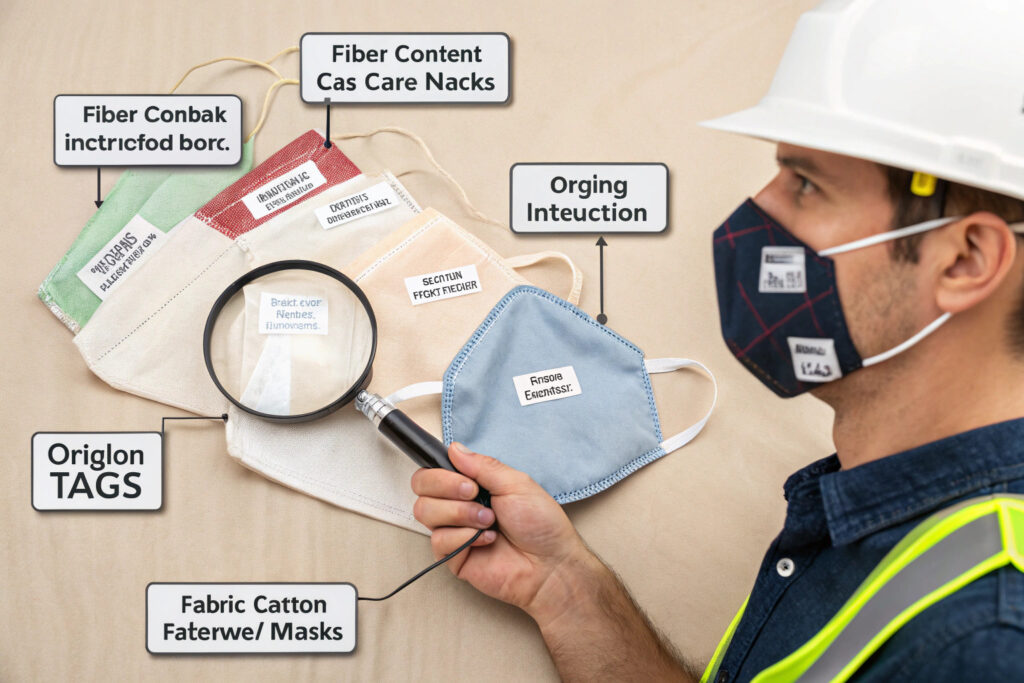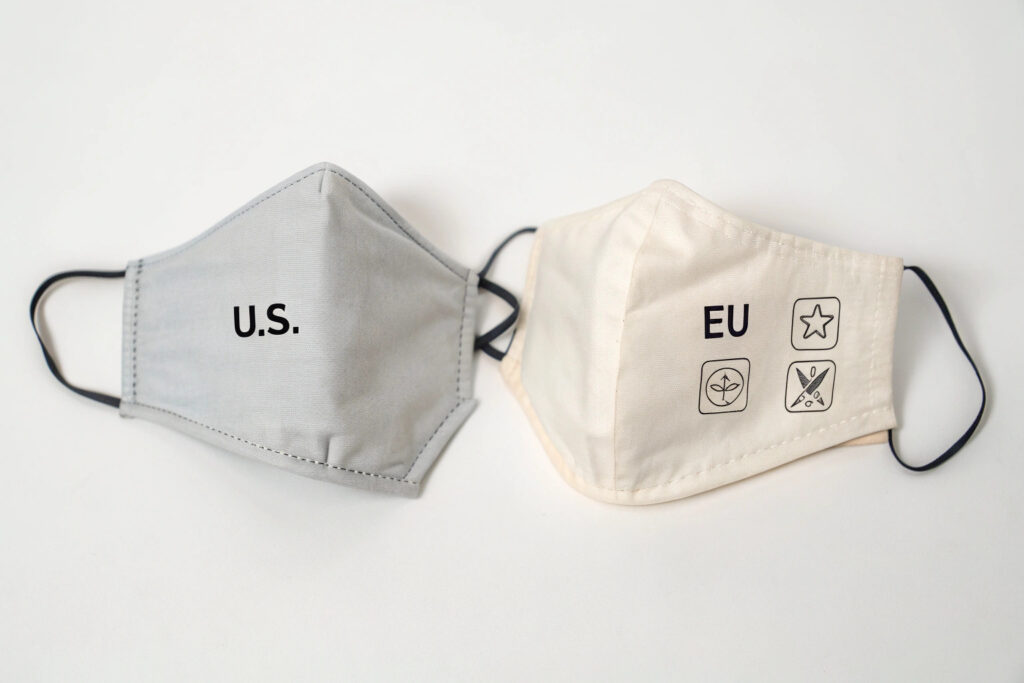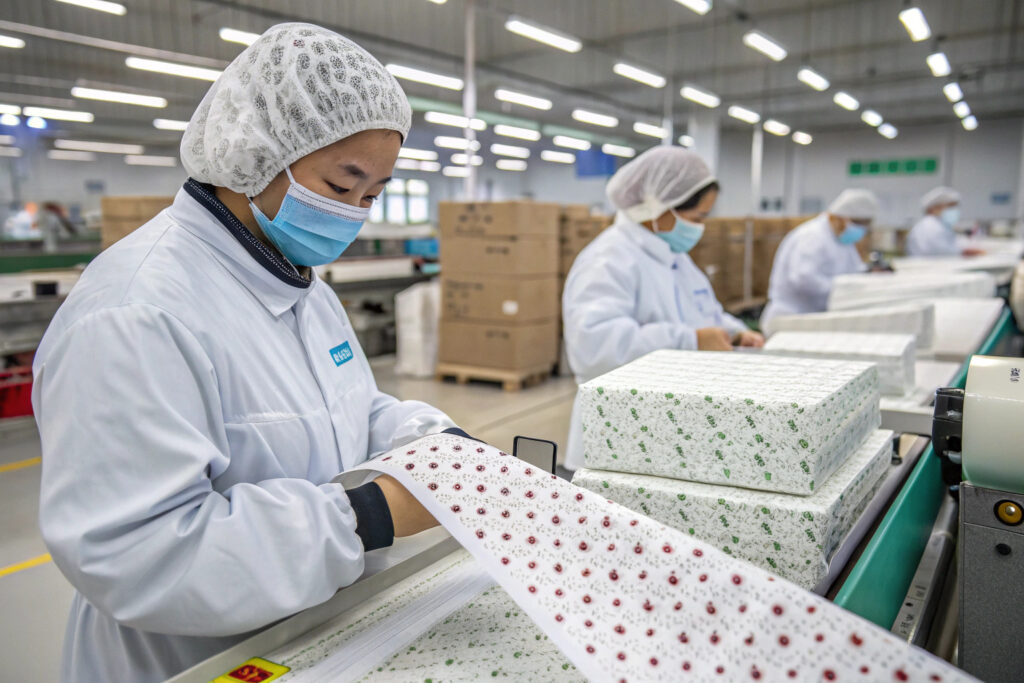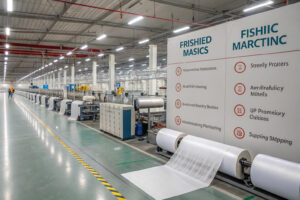When I first entered the global trade of fabric masks, I underestimated the complexity of labeling requirements. Buyers were happy with my samples, but compliance became the gatekeeper to bulk orders. Each country had its own set of rules, and mistakes could lead to delays or even rejected shipments.
Labeling requirements for fabric masks vary widely across countries, covering details such as fiber composition, safety standards, origin marking, and language use. To navigate these differences, exporters must understand both general textile labeling laws and pandemic-specific mask regulations, while also preparing for frequent updates from governments.
I quickly realized that beyond making high-quality masks, success meant mastering international compliance. This article explores how to manage labeling requirements for fabric masks when exporting to different markets.
What Are the Basic Labeling Requirements for Fabric Masks?
Many importers ask me about the basics. The truth is, every mask that leaves my factory must carry certain universal labeling details. Without them, even the most advanced product cannot clear customs smoothly.
Basic labeling requirements for fabric masks usually include fiber content, country of origin, care instructions, and manufacturer identification. These rules apply in most global textile markets, forming the foundation for compliance in every export shipment.

Why Is Fiber Content Labeling Mandatory?
Fiber content is one of the first things customs inspectors check. In the United States, for example, the Federal Trade Commission (FTC) enforces fiber labeling rules under the Textile Fiber Products Identification Act. Similarly, the European Union requires compliance with the EU Textile Regulation.
For fabric masks, this means we must list exact percentages of cotton, polyester, or spandex used. Even small errors, such as rounding 97.5% cotton to 98%, can result in penalties. For buyers, accurate fiber content also builds trust, as it helps them market masks to eco-conscious or sensitive-skin consumers.
Do Country of Origin Labels Impact Tariffs?
Yes, very much. Country of origin labels affect tariff rates, trade agreements, and even brand reputation. The World Customs Organization (WCO) provides guidance on origin rules. For instance, when I export to the U.S. under certain trade agreements, a clear "Made in China" or "Made in Vietnam" label ensures correct tariff treatment. Without it, shipments risk reclassification and higher duties.
Origin labeling also influences consumer perception. Many European customers demand clear sourcing transparency, especially in ethical fashion markets. So, beyond compliance, I see origin labeling as part of my storytelling as a manufacturer.
How Do U.S. and EU Labeling Standards Differ?
When I first began selling to both the U.S. and Europe, I thought one set of labels would be enough. I quickly learned that was not the case.
The U.S. and EU labeling standards for fabric masks differ in areas such as language requirements, care symbols, and safety notices. U.S. rules emphasize clear fiber percentages and manufacturer identity, while EU regulations mandate multilingual labels, standardized washing icons, and stricter chemical safety disclosures.

Why Do U.S. Labels Focus on Simplicity?
The U.S. prefers straightforward consumer communication. Under the FTC rules, English is mandatory on fiber content and care labels. While washing instructions can include symbols, many U.S. retailers still expect written instructions. According to the American Apparel & Footwear Association, simplicity helps reduce liability in consumer lawsuits.
This explains why my U.S. shipments often carry short, direct care instructions like "Machine wash warm, tumble dry low." Compared to the EU, the U.S. does not require as many multilingual translations, which reduces printing complexity but also limits cross-border retail opportunities.
Why Are EU Labels More Detailed?
The EU places heavy emphasis on consumer safety and accessibility. Under the REACH Regulation (European Chemicals Agency), any chemical treatment on fabrics must be disclosed. Also, the EU requires labels to use ISO standardized laundry care symbols, ensuring clarity regardless of language.
For instance, one of my German clients requested six-language labels covering German, French, Italian, Spanish, Dutch, and English. This extra detail increases costs, but it ensures compliance across the entire European market. For exporters like me, investing in multilingual labels opens more doors across EU member states.
What Special Labeling Rules Apply to Children’s Fabric Masks?
Children’s fabric masks are a fast-growing segment, but also the most tightly regulated. Parents want assurance, and regulators demand extra clarity.
Labeling requirements for children’s fabric masks often include age grading, choking hazard warnings, and certification marks. Both the U.S. and EU impose stricter safety rules on products for minors, requiring manufacturers to provide clear guidance and proof of non-toxicity.

Why Is Age Labeling Essential for Kids’ Masks?
Age labeling prevents misuse and ensures safety. In the U.S., the Consumer Product Safety Commission (CPSC) requires products marketed to children to include clear age grading. For example, a fabric mask labeled "Ages 3–7" helps parents choose correctly and protects manufacturers from liability claims.
In Europe, age labeling is equally critical. The Toy Safety Directive applies when products are considered child-related. Even though masks are not toys, regulators often apply similar standards. Including age suitability on my labels helps me reassure European buyers that my products meet high safety benchmarks.
Do Children’s Masks Require Special Certifications?
Yes, especially in Europe. Children’s masks often need certification under EN 14682 for cords and drawstrings on clothing, which is managed by the European Standardization Committee. In the U.S., third-party testing for lead content is mandatory under the CPSIA law.
When I manufacture children’s fabric masks, I send samples to accredited labs for testing. These certifications are costly, but they differentiate my brand. Buyers value certified products because it lowers their risk of recalls and strengthens their retail positioning.
How Can Exporters Stay Updated With Changing Regulations?
Regulations are never static. What was valid last year may already be outdated. Exporters who fail to keep pace risk customs seizures and financial losses.
Exporters can stay updated on labeling requirements for fabric masks by subscribing to government trade alerts, working with compliance consultants, and partnering with buyers who share regulatory updates. Digital tools and QR code tracking also make compliance more transparent and manageable.

Why Are Digital Tools Changing Compliance?
Digital tracking systems reduce errors. For example, I use QR-coded labels linked to cloud-based compliance data. This system is inspired by guidelines from the GS1 Global Standards. Buyers can scan the code to view fiber composition, test reports, and sustainability data instantly.
This transparency builds trust with overseas clients. It also reduces disputes, since both parties see the same verified information. With AI-driven tools, I can even forecast which regulations are likely to change, helping me adjust production in advance.
How Do Industry Partnerships Help?
No exporter can handle regulations alone. I work closely with trade associations like the China Chamber of Commerce for Import and Export of Textiles. They provide regular updates on new requirements in Europe and America. Additionally, buyers often share their own compliance checklists.
By combining supplier knowledge, buyer requirements, and third-party certifications, I can minimize risk. Strong partnerships make compliance less of a burden and more of a shared responsibility across the supply chain.
Conclusion
Navigating labeling requirements for fabric masks across different countries is not only about following rules but also about building credibility in the global market. From fiber content and origin marking to children’s safety standards, each regulation reflects consumer trust and trade reliability. By adopting digital compliance tools and maintaining strong industry partnerships, exporters like me can transform labeling from a burden into a competitive edge.
If you are considering launching your own line of fabric masks or need a trusted partner to manage compliance, labeling, and production, I invite you to work with us at Shanghai Fumao. You can contact our Business Director Elaine at elaine@fumaoclothing.com to discuss your custom fabric mask orders.


























